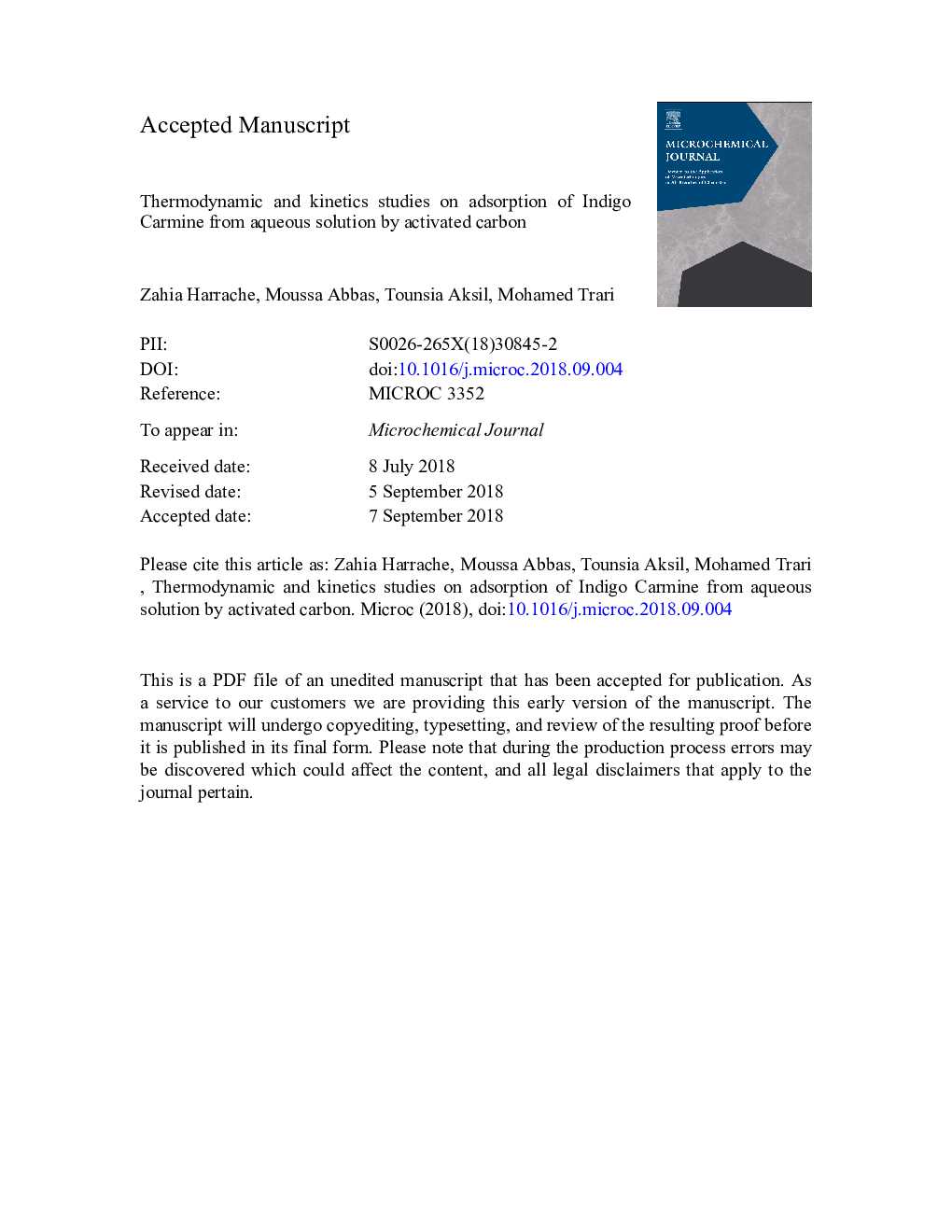| Article ID | Journal | Published Year | Pages | File Type |
|---|---|---|---|---|
| 10140964 | Microchemical Journal | 2019 | 20 Pages |
Abstract
The effect of the initial dye concentration (10-60â¯mg/L), contact time (0-90â¯min), pH (1â12), agitation speed (0-600â¯rpm), adsorbent dose (1-10â¯g/L) and temperature (298-323â¯K) were determined to find the optimal conditions for a maximum adsorption. The adsorption mechanism of Indigo Carmine onto AC was studied using the first pseudo order, second pseudo order and Elovich kinetics models. The adsorptions kinetic were found to follow a pseudo second order kinetic model with a determination coefficient (R2) of 0.999. To get an idea on the adsorption mechanism, we applied the Webber-Morris diffusion model. The equilibrium adsorption data for Indigo Carmine on AC were analyzed by the Langmuir, Freundlich, Elovich, Dubinin and Temkin models. The results indicate that the Langmuir model provides the best correlation at 25â¯Â°C (qmaxâ¯=â¯79.49â¯mg/g) and Dubinin at 40â¯Â°C (qmaxâ¯=â¯298.34â¯mg/g). The adsorption isotherms at different temperatures have been used for the determination of thermodynamic parameters such as free energy (ÎG°â¯=â¯â0.071 to â1.050â¯kJ/mol), enthalpy (ÎH°â¯=â¯28.11â¯kJ/mol), entropy (ÎS°â¯=â¯0.093â¯kJ/mol·K) and activation energy (Ea) of 51.06â¯kJ/mol of adsorption. The negative ÎG° and positive ÎH° values indicate that the overall adsorption is spontaneous and endothermic.
Related Topics
Physical Sciences and Engineering
Chemistry
Analytical Chemistry
Authors
Zahia Harrache, Moussa Abbas, Tounsia Aksil, Mohamed Trari,
